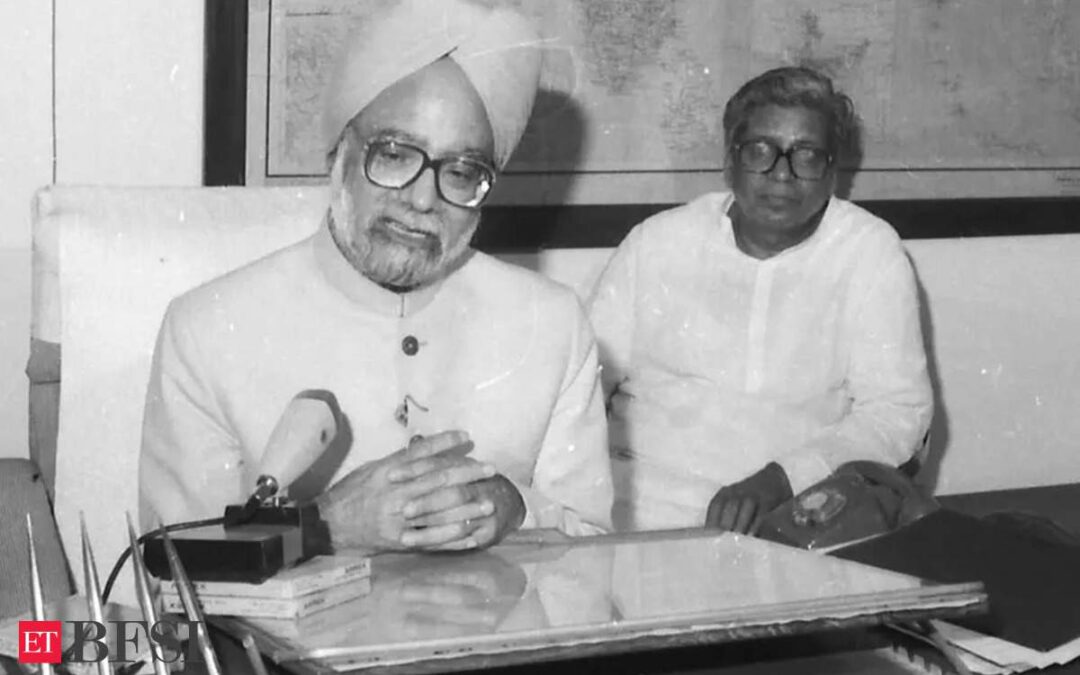Almost 10 years after he gave way to Narendra Modi as prime minister of India, Manmohan Singh retired last week from public life. During his long career, Singh also served as chief economist, central bank governor, finance minister, and foreign minister. Although he disappointed many who hoped he would accomplish more, India today owes much of its success to reforms he implemented.
Indeed, no other individual deserves more credit for the decades of economic liberalization that have lifted so many Indians out of poverty. Even as the economy impresses many as a bright spot for growth and progress, nobody who lived through Singh’s heyday as a policymaker in the 1990s and 2000s would deny that some energy, some momentum, has been lost.
Last week, Singh closed out his final term in the Rajya Sabha or Council of States, India’s upper house. Some would argue that his 33 years in that chamber, elected by state assemblies, are a reminder not just of the longevity of his political career but also of its limits: He was never a member of the directly elected lower house, unlike most of his predecessors as well as Modi. Singh could thus never claim the popular legitimacy that his successor wears so effortlessly.
The standard critique of Singh mingles this lack of legitimacy with his retiring manner and stilted speechmaking to create a picture of a weak man who just happened to make history. That narrative, however, falls apart at the slightest probing. As prime minister, Singh successfully managed an unwieldy coalition that was rarely in sympathy with his aims. On multiple occasions, he defied those erstwhile allies to ram through changes — opening up domestic sectors to foreign investment, signing a landmark nuclear deal with the US — that pushed India closer to the vision he had for the country.
Nor does Singh’s personal story — he walked miles to an Urdu-language school, studied by the light of a kerosene lamp, and eventually won a place at Oxford and an economics doctorate — speak to any sort of weakness. It would be truer to say he was cautious and careful about wielding power.
That may have been partly because of his lack of popular legitimacy. He also had an economist’s realism about the limitations of the Indian state.
Most importantly, Singh was mindful of the brittleness of Indian political consensus in a way only someone born before Independence in 1947 could be. He was the last of that generation in power; our political class no longer carries within it a sense of the fragility of India’s growth story and political unity.
Some of Singh’s caution and realism would come in handy today. India has grown a little too confident about its future. Economic growth is not our birthright; it must be earned through a constant stream of reforms and pro-growth policies.
Singh’s decade as prime minister was spent struggling with the global financial crisis, soaring oil prices, and his rancorous, left-leaning coalition. It is not hard to argue that, had he been granted the positive global climate and comfortable parliamentary majorities that Modi enjoys, he would have moved much quicker than his successor to implement the essential pro-growth reforms India needs. And he almost certainly would have been more careful about preserving the country’s federal structure and defending its liberal institutions.
Singh’s generation had a clear sense of the delicate nature of the Indian project: to bring the turbulence of growth to a disparate, poor nation while also keeping the country united and democratic. Former US President Barack Obama wrote that Singh once warned him: “In uncertain times, the call of religious and ethnic solidarity can be intoxicating.” It’s clear Singh felt his job was to resist that call.
Almost alone in his generation, Singh also had a clear vision for how that project should end — with India as a comfortably off bastion of liberal democracy, celebrating both its economic success and its diversity. Singh predicted, in his final press conference as prime minister, that history would judge him kindly. Perhaps it already has.
(Disclaimer: The opinions expressed in this column are that of the writer. The facts and opinions expressed here do not reflect the views of www.economictimes.com.)










